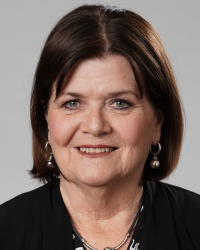NSW councils are celebrating a victory after the NSW government committed $57 million to ensure there will be full in-person voting at next year’s council elections.

Local government elections have been postponed until September 2021 because of COVID, as the state government weighed a proposal from the NSW Electoral Commission for mandatory universal postal voting.
But local government minister Shelley Hancock on Tuesday told councils that in-person voting will proceed next year, backed by the funding package contained in today’s state budget.
“In direct response to calls from the local government sector, I have instructed the NSW Electoral Commissioner to prepare for full attendance voting at the September 2021 local government elections,” the minister said in circular to councils.
The move has been welcomed by LGNSW president Linda Scott, who expressed concerns that the process would not have been fair and transparent.
“Fair and transparent democracy matters,” she said on social media. “Very good news in today’s budget to ensure full in person voting at next year’s NSW local government elections.”
The state government will also provide the Electoral Commission with additional funding to hold COVID-Safe elections if required, so councils won’t have to wear additional costs, Ms Hancock said.
The budget also delivers economic relief to councils supporting local communities impacted by bushfires, drought and coronavirus with more than $150 million for infrastructure, facilities and services.
“This Budget will continue to ensure we support local councils and communities doing it tough,” Ms Hancock said.
Planning overhaul
Councils are also set to benefit from a $570 million overhaul of the planning system, which the minister Rob Stokes said would streamline planning processes for both levels of government.

It includes $28 million for Planning Delivery Unit to fast track complex proposals, $92 million for e-Planning, $14.8 for an online tool to calculate infrastructure contributions and $133 million over three years to reduce decision making times across the planning system.
The funding also provides $250 million over three years for the Public Legacy Program which provides councils with public space grants in exchange for accelerating development applications and rezonings.
“These initiatives will help create a planning system that is more efficient and less complex – whether you’re dealing with the NSW Government or councils,” Planning minister Rob Stokes said.
Meanwhile, there’s $76 million in the bag for an accelerated infrastructure fund for the delivery of roads, stormwater, infrastructure and public space in high growth local government areas in Blacktown and the Hills district.
Handing down the budget on Tuesday, Treasurer Dominic Perrottet forecast a deficit of $16 billion for 2020-21, saying forecast revenue was down by $25 billion over five years and net debt is expected to peak at $104 billion at June 2024.
Other council budget wins
- $96 million to extend the Waste Less Recycle More program
- $104 million for upgrades to arts and cultural assets
- $312 million for the Fixing Local Roads program
- $139 million in interest free loans to replace flammable cladding on high-risk buildings
- $78 million for pensioner discounts on rates and charges
- $33 million to meet increases in the emergency services levy
- $9.4 million for the Local Infrastructure Renewal Scheme
- $710 million for walking and cycling infrastructure
- $6 million to fund expansion works at the RSPCA NSW Sydney Shelter at Yagoona and $6 million from the Companion Animals Fund to manage cats and dogs
- $4 million under the Low-Cost Loans Initiative to help provide low interest loans to councils to invest in infrastructure to address housing affordability
- $650,000 for a new database for the NSW Pet Registry





$710 million for walking and cycling infrastructure, a win or a lose?
Covid 19 has brought a massive influx of people to walking and Cycling. The only issue has been that the infrastructure isn’t there Now to support this trend.
It’s not that some Councils, public and User groups haven’t been shouting for this to have materialized earlier.
But finally someone listening with $’s. Unfortunately, The Fast track planning approvals for state significant projects, has necessitated that Planning for the infrastructure delivery is out of scope and so doesn’t include the active links shared pathways,
Not part of those deals.
So we still have shared pathways that end in the most strangest places. The significant lack of way finding or miss leading signage. But the most common of all route sign the Graphic person and bike with the word END!
Developments that will benefit by having shared pathways. Not planned to include them. so the already poor infrastructure is expected to cope. The delivery of projects by transport bodies on the books don’t include active routes and share pathways either.
The money is very welcome but the Planning regime is lackluster, A strategic rethink is needed to have had happened, along with the $’s.